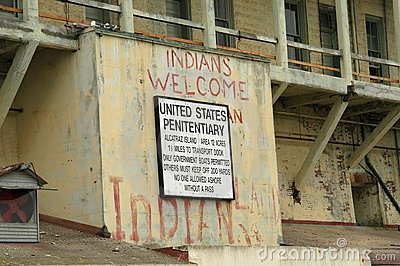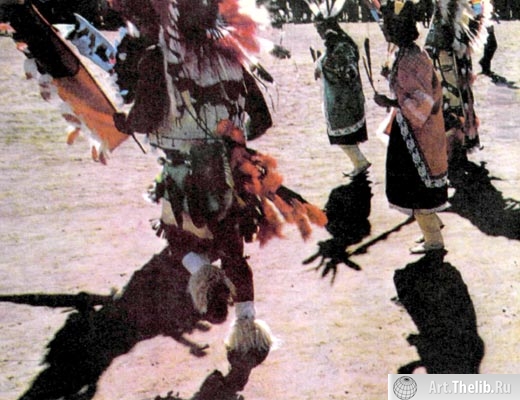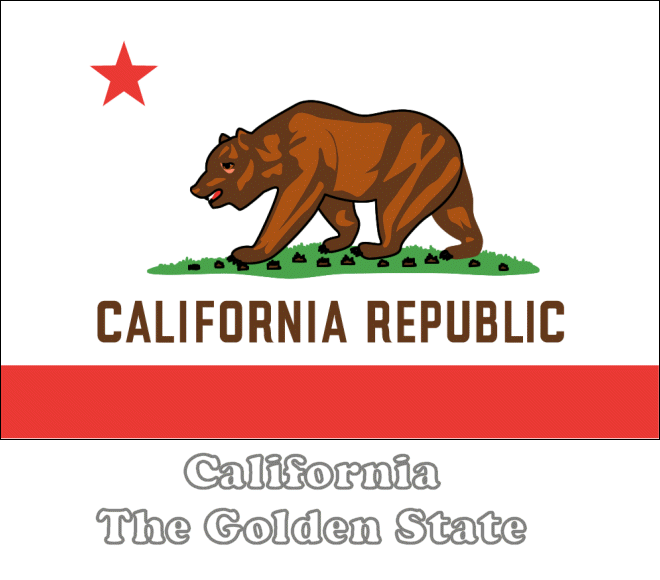
- •Предисловие
- •Содержание:
- •The United States of America
- •One nation, under God, with Liberty and Justice for all.
- •The United States
- •Us State Nicknames
- •Illinois
- •Indiana (no official nickname)
- •Vermont
- •Virginia
- •Some of the benchmark events of American history mentioned in the “Gallery of American Presidents”:
- •Монеты сша
- •White House History
- •About the Building
- •The Oval Office
- •Eisenhower Executive Office Building
- •Camp David
- •Air Force One
- •Us Government The Executive Branch
- •The President
- •The Vice President
- •Executive Office of the President
- •The Cabinet
- •Department of Agriculture
- •Department of Commerce
- •Department of Defense
- •Department of Education
- •Department of Energy
- •Department of Health and Human Services
- •Department of Homeland Security
- •Department of Housing and Urban Development
- •Department of the Interior
- •Department of Justice
- •Department of Labor
- •Department of State
- •Department of Transportation
- •Department of the Treasury
- •Department of Veterans Affairs
- •The Legislative Branch
- •The Legislative Process
- •Powers of Congress
- •Government Oversight
- •The Judicial Branch
- •The Supreme Court of the United States
- •The Judicial Process
- •The Constitution
- •Why a Constitution?
- •The Constitutional Convention
- •Ratification
- •The Bill of Rights
- •Elections & Voting
- •The great seal of the united states
- •Designing a Seal The First Committee
- •The Second Committee
- •The Third Committee
- •Charles Thomson’s Proposal
- •The Final “Device”
- •Charles Thomson’s “Remarks and Explanation,” Adopted by the Continental Congress, June 20, 1782
- •Its simplicity and lack of clutter. His design was
- •Meaning of the Seal
- •Designs of the Reverse
- •In 1782, no die has ever
- •Uses of the Seal and the Coat of Arms
- •Requests To Use the Great Seal and Coat of Arms
- •Great Seal Today
- •The Great Seal of the United States
- •The Great Seal on Display
- •Langley
- •Central intelligence agency
- •The work of a nation. The centre of intelligence. About cia
- •Today's cia
- •Mission
- •The cia Campus: a Walk Outside Headquarters
- •Nathan Hale Statue
- •Memorial Garden
- •The cia Campus: New Headquarters Building
- •The History of the Scattergood-Thorne Property
- •Cia Glossary
- •Laughing at cia?
- •The lapd, the fbi and the cia
- •Federal Bureau of Investigation
- •Laughing at fbi?
- •An fbi investigation
- •9/11 Warnings and fbi/cia Bungling
- •Late-Night Jokes About Sept. 11 Intelligence Failures
- •Foggy Bottom
- •Hitting Bottom in Foggy Bottom The State Department suffers from low morale, bottlenecks, and bureaucratic ineptitude. Do we need to kill it to save it? by matthew armstrong | september 11, 2009
- •The Watergate hotel
- •Us Department of State Headquarters
- •History
- •Duties and responsibilities
- •American entertainment
- •Hollywood
- •Hollywood glossary
- •Capitol Records
- •.. 1750 Vine Street, Hollywood, ca. / (323) 462-6252
- •On Hollywood Boulevard: from Gower Street to La Brea Avenue, and on Vine Street: from Yucca Street to Sunset Boulevard.
- •Hollywood glossary
- •"Celebrity Death Sites" a list of celebrities, whose deaths were the result of murder or suicide, including the location of their death sites
- •John Belushi's Death Site"
- •John Belushi's Death Site.
- •Silicon Valley
- •Вот, что мне особенно понравилось (для людей, изучающих английский, может показаться странным, что некоторые слова попали в разряд «чудных» с точки зрения американца).
- •Distinctive features Phonology
- •Grammatical aspect marking
- •Ebonics Translations
- •Ebonics Prayer
- •Nursery Rhymez
- •The us army
- •Army Commands (acom):
- •Army Service Component Commands (ascc):
- •Direct Reporting Units (dru):
- •Mission
- •“The Army Goes Rolling Along”
- •Пример описания боевых характеристик: Patriot
- •Entered Army Service
- •Description and Specifications
- •Manufacturer
- •Униформа армии сша
- •Знаки различия званий уорент-офицеров (Warrant Officers).
- •Знаки различия званий младших офицеров (Сompany Grade Officers).
- •Знаки различия званий старших офицеров (Field Grade Officers).
- •Знаки различия званий генералов (General Officers).
- •Наградная система армии сша
- •2. Крест за выдающуюся службу (Distinguished Service Cross).
- •8. Медаль Министерства обороны за отличную службу (Defense Superior Service Medal).
- •9. «За боевые заслуги», Орден Почетного Легиона (Legion of Merit).
- •Military Humour
- •Спецназ сша/us special forces
- •Рейнджеры / us Army Rangers
- •Спецподразделения Военно-воздушных сил сша / us Air Force Special Operations
- •Спецподразделения военно-морского флота сша, известны как "морские котики"/us Navy Seals
- •Отряд "Дельта" / Delta Force
- •Разведка Морской Пехоты сша / us Marine Force Recon
- •Воздушно-десантные войска/ us Airborn
- •Десятая Горная Дивизия/10th Mountain Division
- •Полувоенные силы Центрального Разведывательного Управления/cia Paramilitary Forces
- •Начало формы Конец формы
- •Sightseeing in america
- •Visual Landmarks New York
- •Районы Нью-Йорка
- •Управление
- •Культура
- •Планировка города
- •Транспорт
- •Сигналы опасности
- •Мосты и туннели
- •Связь в Нью-Йорке
- •Что раздражает ньюйоркцев?
- •Manhattan
- •Башня Банка Америки (Bank of America Tower)
- •Эмпайр Стейт Билдинг Why do we call New York City the Big Apple?
- •Statue of Liberty
- •The National Park Service commemorates the anniversary of the Statue of Liberty annually on October 28th. Mount rushmore
- •The grand canyon
- •Niagara Falls
- •Alcatraz
- •History
- •Military history
- •Military prison
- •Prison history Federal prison
- •Notable inmates
- •Post prison years
- •Native American occupation
- •Landmarking and development
- •Arlington National Cemetery
- •Placing of burial flag over a casket
- •A firing party
- •Сто вопросов и ответов о сша one hundred questions and answers about
- •2. What are the ingredients of a traditional American Thanksgiving dinner?
- •3. What do the terms "melting pot" and "salad bowl" mean to u.S. Society and culture?
- •Impressionists?
- •67. Which American President was the first to live in the White House?
- •Isbn 987–5–932050–42–2
- •191104, Г. Санкт-Петербург, наб. Р. Фонтанки, 32/1
Post prison years
Because it was far more expensive to operate than other prisons (nearly $10 per prisoner per day, as opposed to $3 per prisoner per day at Atlanta), and due to half a century of salt water saturation which severely eroded the buildings, the penitentiary was closed on March 21, 1963 by decision of Attorney General Robert F. Kennedy. Another contributing factor for the closure was the pollution produced by the sewage deposited into San Francisco bay from the approximately 250 inmates and 60 Bureau of Prisons families on the island. The United States Penitentiary in Marion, Illinois, a traditional land-bound prison, opened that same year to serve as a replacement for Alcatraz.
Native American occupation
Beginning on November 20, 1969, a group of Native Americans from many different tribes occupied the island, and proposed an education center, ecology center and cultural center. According to the occupants, the Treaty of Fort Laramie (1868) between the U.S. and the Sioux included provisions to return all retired, abandoned or out-of-use federal land to the Native people from whom it was acquired. (Note: The Treaty of 1868 stated that all abandoned or unused federal land adjacent to the Sioux Reservation could be reclaimed by descendants of the Sioux Nation.) With the clarification, Indians of All Tribes abandoned the Sioux treaty as the basis of their occupation and claimed Alcatraz Island by "Right of Discovery". Begun by urban Indians in San Francisco, some of whom were descended from people who relocated there under the Federal Indian Reorganization Act of 1934), the occupation attracted other Native Americans from across the country, including American Indian Movement (AIM) activists from Minneapolis.

The Native Americans demanded reparation for the many treaties broken by the US government and for the lands which were taken from so many tribes. As part of the Right of Discovery, the historian Troy R. Johnson states in The Occupation of Alcatraz Island, that indigenous peoples knew about Alcatraz at least 10,000 years before any European knew about any part of North America.
During the nineteen months and nine days of occupation, several buildings were damaged or destroyed by fire, including the recreation hall, the Coast Guard quarters and the Warden's home. The origins of the fires are unknown. The U.S. government demolished a number of other buildings (mostly apartments) after the occupation had ended. Graffiti from the period of Native American occupation are still visible at many locations on the island.
The results of Alcatraz inspired other political actions: the Trail of Broken Treaties and the Longest Walk in 1985. The occupation of Alcatraz played a large role in changing self-perception for many Native Americans. It is defined as a key movement in their struggle for what some felt was rightfully theirs. Following a succession of demands at Alcatraz, the U.S. government returned excess, unused land to the Taos, Yakama, Navajo and Washoe tribes.
Landmarking and development
The entire Alcatraz Island was listed on the National Register of Historic Places in 1976, and was further declared a National Historic Landmark in 1986. In 1993, the National Park Service published a plan entitled Alcatraz Development Concept and Environmental Assessment. This plan, approved in 1980, doubled the amount of Alcatraz accessible to the public to enable visitors to enjoy its scenery and bird, marine, and animal life, such as the California slender salamander.
Today American Indian groups such as the International Indian Treaty Council hold ceremonies on the island, most notably, their "Sunrise Gatherings" every Columbus and Thanksgiving Day.

Glossary:
Lighthouse
|
Маяк |
Gannet
|
Баклан |
Rock pools |
Водоем, заполняемый только во время прилива |
Manifest Destiny |
Доктрина «предназначенности», «предначертания»
Manifest Destiny was the 19th century American belief that the United States was destined to expand across the North American continent, from the Atlantic Seaboard to the Pacific Ocean. It was used by Democrats in the 1840s to justify the war with Mexico; the concept was denounced by Whigs, and fell into disuse after the mid-19th century.
|
Bear Flag Republic |
Калифорния The California Republic, also called the Bear Flag Republic, is the name used for a revolt against Mexico proclaimed by California settlers on June 14, 1846, in Sonoma in the then-Mexican province of California. Declared during the Mexican–American War, the "republic" was a popular revolt; the participants never formed a government, and the republic was never recognized by any nation. The revolt lasted 26 days, at the end of which the U.S. Army took control of the area. It is most notable for creating the "Bear Flag", with insignia that appear on the modern state flag.
|
Treaty of Guadalupe Hidalgo |
Гуадалупе-Идальго мирный договор, заключён между США и Мексикой в Гуадалупе-Идальго (Guadalupe Hidalgo, Мексика) 2 февраля 1848 в результате американо-мексиканской войны 1846—48, закончившейся поражением Мексики. Договор оформил захват США более половины территории Мексики (2,3 млн. км2). Согласно Г.-И. м. д. США выплачивали Мексике за потерянные ею территории "компенсацию" в 15 млн. долл. и, кроме того, американское правительство брало на себя удовлетворение финансовых претензий своих граждан к Мексике в сумме 3,2 млн. долларов. Захваченная у Мексики территория составляет около четверти территории современных США (штаты Техас, Калифорния, Нью-Мексико, Аризона, Невада, Юта, часть Колорадо и Вайоминга) и обладает большими запасами нефти, золота, меди, угля, ценными пастбищами и плодородными пахотными землями. |
Eventuate in |
Приводить к определенному результату, вылиться в… |
Render obsolete |
Устаревать, приводить к устареванию
|
To level (the island) |
Сравнять (остров) с землей
|
Shell-proof |
Бронированный
|
Hopi |
Хопи — индейский народ, проживающий на площади 12 635 км² в резервации Хопи на северо-востоке Аризоны. Традиционно принадлежит к группе народов пуэбло. По всеамериканской переписи 2000 г. население резервации хопи составляло 6 946 человек. Наибольшая по величине община проживала в Фёрст-Меса, штат Аризона. |
Conscientious objectors |
Лица, отказывающиеся нести военную службу по религиозным или другим убеждениям |
Mythbusters |
MythBusters is a science entertainment TV program created and produced by an Australian company, Beyond Television Productions, originally for the Discovery Channel in the United States. The series is screened by numerous international broadcasters, including SBS One and the Discovery Channel in Australia, Discovery Channel Canada, Quest and the Discovery Channel in the UK. The show's hosts, special effects experts Adam Savage and Jamie Hyneman, use elements of the scientific method to test the validity of rumors, myths, movie scenes, adages, Internet videos and news stories. |
Generated incredible media attention |
Привлек невероятное (невиданное) внимание средств массовой информации |
Bootlegger |
Контрабандист
|
Numbers operator |
Мошенник
|
Tax evasion |
Уклонение от налогов
|
Conspiracy |
Преступный сговор, преступная группировка
|
Sioux |
Сиу (племя североамериканских индейцев)
|
The Trail of Broken Treaties |
The Trail of Broken Treaties (also known as the Trail of Broken Treaties Caravan) was a cross-country protest by American Indian and First Nations organizations that took place in the autumn of 1972, intended to bring attention to American Indian issues such as treaty rights, living standards, and inadequate housing. |
The Longest Walk |
"Длинный марш" в 1978 году, когда за сто пятьдесят один день тысяча индейцев из разных племен прошли четыре с половиной тысячи километров и поставили вигвамы перед Белым домом. The Longest Walk was an American Indian Movement led spiritual walk to support tribal sovereignty and bring attention to 11 pieces of anti-Indian legislation that would among things have abrogated Indian Treaties, quantified and limited water rights, etc. It started on February 11, 1978 with a Ceremony on Alcatraz where a Sacred Pipe was loaded with tobacco and that Pipe was carried the entire distance. This 3,200-mile (5,100 km) Walk's purpose was to educate people about the United States government's continuing threat to Tribal Sovereignty and served as a rallying point for many thousands of Indian People representing many Indian Nations throughout the United States and Canada. Most significantly, traditional spiritual leaders from many tribes came and ran Ceremonies, and even international spiritual people, primarily from Japan, also supported the Walk. |


